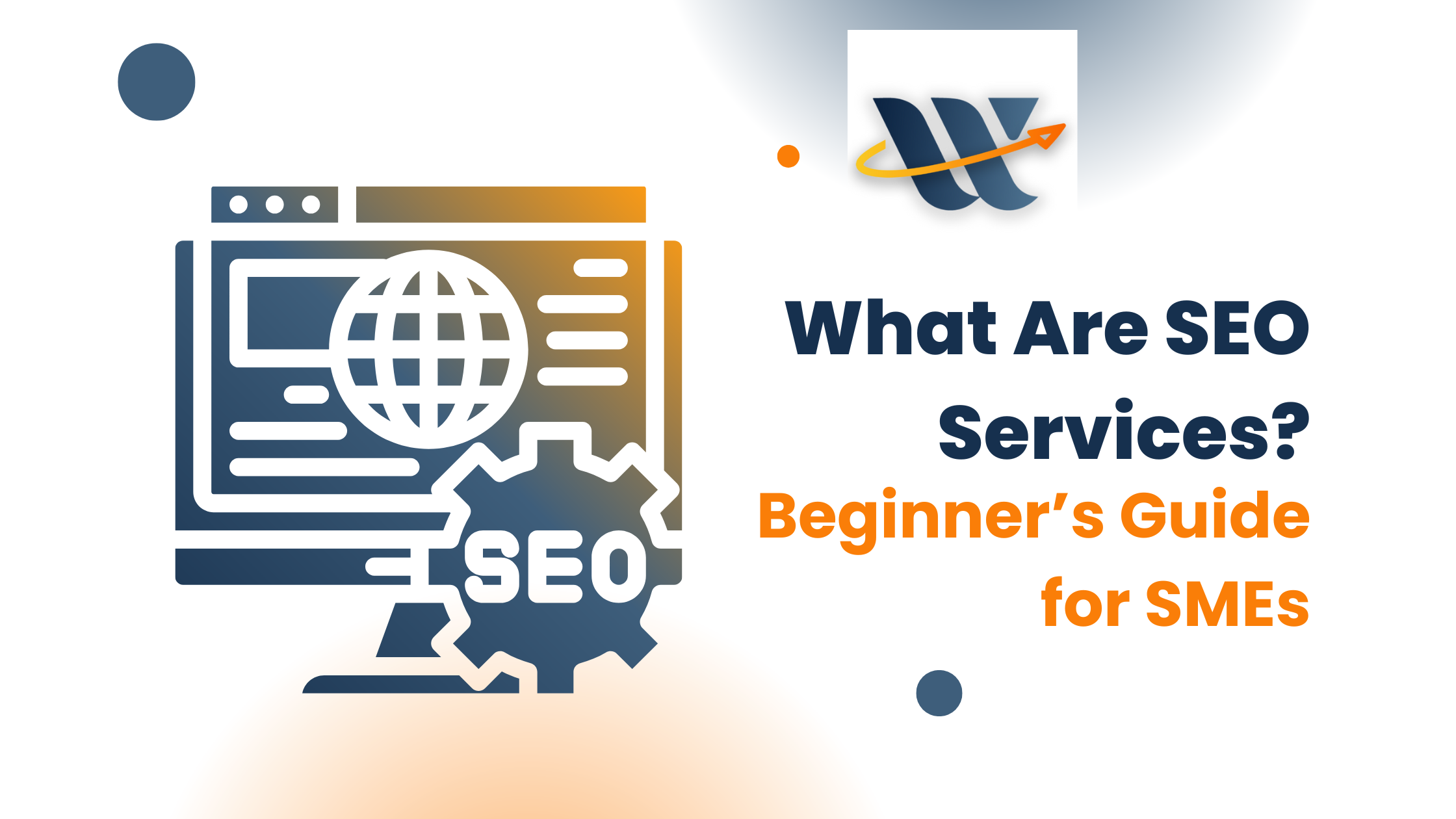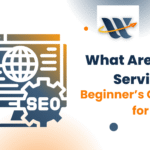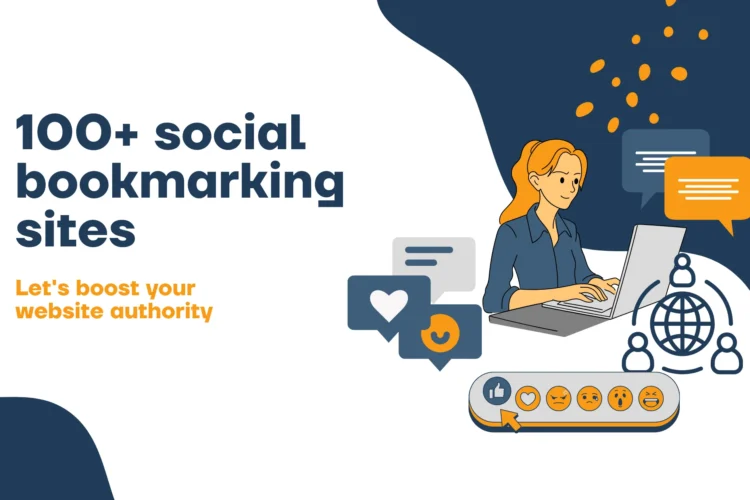
Search Engine Optimization (SEO) services are just not a trendy term anymore. They are a key part of modern marketing for small and medium-sized businesses (SMEs). SEO can help your business, regardless of its location. You could run a family bakery in Chicago. You might have a boutique startup in London. Or you could own a local crafts shop in Mumbai. It turns your website into a traffic magnet. This means it attracts the right customers when they are looking for your products or services.
According to recent studies, over 90% of online experiences begin with a search engine. Businesses that invest in SEO earn about 2.8 times more revenue per dollar spent than with traditional ads. In today’s world of AI, search engines and answer engines are important. Examples include Google’s SGE, ChatGPT, and Bing Copilot. These tools depend on structured and reliable content to provide quick answers. This makes SEO services more important than ever.
Key Takeaways
- A clear definition of SEO services and their three main pillars
- Why small businesses across the US, UK, UAE, Canada, Ireland, and India can’t afford to ignore SEO
- An in-depth exploration of each SEO component: keyword research, on-page, technical, off-page, and local SEO
- Delivery models and how agencies, freelancers, and in-house teams differ
- Criteria for choosing the right SEO provider in each primary country
- Actionable next steps and FAQs to help you get started right away
By the end of this guide, you’ll have the confidence to evaluate SEO services, understand the processes involved, and take the first steps toward achieving sustainable online growth. Let’s dive in!
What Are SEO Services?
SEO services encompass the strategies, tactics, and ongoing activities designed to improve your website’s visibility in organic search results. They fall into three interconnected categories:
- On-Page SEO
- Content Optimization: Crafting high-quality, relevant, and authoritative content that satisfies user intent and leverages target keywords naturally.
- HTML Tags: Optimizing title tags, meta descriptions, headings (H1–H6), and ALT text for images to improve click-through rates and keyword relevance.
- Internal Linking: Creating a logical site structure that passes link equity between pages, enhances navigation, and helps search engines crawl your website efficiently.
- Content Optimization: Crafting high-quality, relevant, and authoritative content that satisfies user intent and leverages target keywords naturally.
- Off-Page SEO
- Link Building: Acquiring high-quality, relevant backlinks from authoritative websites and industry influencers to signal trust and authority.
- Brand Mentions & Social Signals: Encouraging positive mentions on social platforms and forums, which indirectly support your SEO by building brand awareness and credibility.
- Reputation Management: Monitoring and managing online reviews, testimonials, and directory listings to maintain a positive digital footprint.
- Link Building: Acquiring high-quality, relevant backlinks from authoritative websites and industry influencers to signal trust and authority.
- Technical SEO
- Site Speed & Performance: Ensuring fast page load times across devices, as delays of even a few seconds can dramatically increase bounce rates.
- Mobile-Friendliness: Implementing responsive design principles to provide an optimal user experience on smartphones and tablets.
- Crawlability & Indexability: Configuring sitemaps, robots.txt, canonical tags, and fixing crawl errors to ensure search engines can access and index your content.
- Structured Data & Schema Markup: Adding JSON-LD or microdata to highlight FAQs, HowTos, local business details, and more, increasing your chances of rich results and AI overview inclusion.
- Site Speed & Performance: Ensuring fast page load times across devices, as delays of even a few seconds can dramatically increase bounce rates.
Together, these pillars form a holistic approach that aligns your website with search engine algorithms while delivering value to real people.
Why Small Businesses Need SEO
SEO is often perceived as a complex, enterprise-level tactic, but small businesses stand to gain the most from targeted, cost-effective SEO strategies:
- Long-Lasting ROI
Unlike pay-per-click (PPC) ads that stop generating traffic once the budget dries up, SEO produces sustained visibility and compounding returns over time. - Local Market Penetration
For businesses targeting specific regions—whether it’s the UAE’s tech hub in Dubai, Ireland’s Dublin, or Canada’s Toronto—local SEO ensures you appear in Maps, Local Packs, and voice searches used by 27% of mobile users. - Competitive Advantage
In markets like the US and UK, where competition is intense, niche keyword targeting and expert optimization allow small players to outrank bigger brands for long-tail, high-intent queries. - Trust & Credibility
Organic rankings convey legitimacy. When your business appears at the top of search results—or featured in AI-powered answer boxes—users perceive you as an industry authority. - User Experience & Insights
SEO improvements often involve site audits and performance enhancements, which translate to faster load speeds, better navigation, and higher engagement. - Integration with AI and GEO
As search engines advance their AI capabilities, SEO merges with Answer Engine Optimization (AEO) and Generative Engine Optimization (GEO). Properly structured content with schema yields direct answers in chatbots and AI overviews, extending your reach beyond traditional SERPs.
Deep Dive: Key SEO Components
1. Keyword Research & Strategy
Effective SEO starts with understanding what your target audience is searching for:
- Long-Tail vs Short-Tail: Balance high-volume, competitive head terms (“SEO services”) with lower-volume, high-intent long-tail phrases (“affordable SEO packages for startups in Toronto”).
- Toolset: Use Semrush, Ahrefs, Google Keyword Planner, and Ultra-sound queries in ChatGPT plugins for fresh keyword ideas.
- Search Intent Mapping: Categorize keywords by intent—informational (“What is SEO?”), navigational (“SEO agency near me”), transactional (“buy SEO services”), and commercial investigation (“SEO pricing USA”).
Deliverable: A prioritized keyword matrix highlighting difficulty, volume, and intent for each target country.
2. On-Page SEO Techniques
On-page optimization ensures each page is tailored to both users and search engine bots:
- Title Tags & Meta Descriptions: Write concise titles (50–60 chars) and meta descriptions (120–160 chars) including the primary keyword up front.
- Header Structure (H1-H6): Use a clear hierarchy to break down content, improving readability and semantic relevance.
- Content Quality & Depth: Incorporate data, quotes, case studies, and multimedia (images, infographics) to achieve comprehensive coverage and increase dwell time.
- Internal & External Links: Link to authoritative sources (e.g., Google’s SEO Starter Guide) and interlink related pages to distribute link equity.
3. Technical SEO Best Practices
A technically sound website sets the stage for effective ranking:
- Site Speed: Aim for <3-second load times using techniques like image compression, minification, and CDNs.
- Mobile-First Design: Leverage responsive frameworks (e.g., Bootstrap) to ensure seamless experiences on all devices.
- Crawl Budget Optimization: Clean robots.txt, implement canonical tags, fix 404s, and redirect loops.
- HTTPS & Security: Switch to HTTPS to secure user data and comply with browser standards. Implement HSTS.
- Structured Data: Apply JSON-LD for FAQs, HowTo steps, LocalBusiness info (address, phone, hours) to boost eligibility for rich snippets and AI overviews.
4. Off-Page SEO & Link Building
Quality backlinks remain a top ranking factor:
- Guest Posting & Outreach: Target niche blogs, industry publications, and local business directories.
- Broken Link Building: Identify broken external links on relevant sites and propose your content as a replacement.
- Digital PR: Craft compelling stories or data reports to earn mentions from news sites and influencers.
- Review & Reputation Sites: Secure positive reviews on Google My Business, Trustpilot, and local directories—especially vital for local SEO.
5. Local SEO Strategies
For location-based searches, specialized tactics apply:
- Google Business Profile (GBP): Optimize business name, categories, description, photos, and standardized NAP (Name, Address, Phone).
- Local Citations: Ensure consistent listings across Moz Local, Yext, and industry-specific directories.
- Geo-Targeted Content: Create neighborhood or region-specific landing pages (e.g., “SEO services in Dublin city center”).
- Local Reviews & Q&A: Encourage customers to leave detailed reviews and ask relevant questions in your GBP.
SEO Service Delivery Models
SEO engagements come in various formats based on budget, goals, and internal capabilities:
- Agency Model
- Pros: Comprehensive expertise across technical, content, and outreach. Dedicated account managers.
- Cons: Higher cost; potential slower turnaround if resources are spread.
- Ideal for: Businesses seeking end-to-end support in US, UK, Canada, UAE, Ireland, India.
- Pros: Comprehensive expertise across technical, content, and outreach. Dedicated account managers.
- Freelancer/Consultant
- Pros: Cost-efficient, flexible scope, direct communication.
- Cons: Limited capacity, potential skill gaps in specialized areas.
- Ideal for: Small projects or supplements to in-house teams.
- Pros: Cost-efficient, flexible scope, direct communication.
- In-House Team
- Pros: Full control, deep brand knowledge, quicker iterations.
- Cons: Hiring costs, training requirements, narrower skill set.
- Pros: Full control, deep brand knowledge, quicker iterations.
Ideal for: Organizations with ongoing SEO budgets and capacity to manage operations.
Choosing the Right SEO Provider
When evaluating providers, consider these criteria:
- Track Record & Case Studies: Request real results in your industry and geography, such as increased organic traffic by X% for a Canadian e‑commerce site.
- Ethical Practices: Ensure white-hat only—no private blog networks (PBNs), no keyword stuffing, no hidden link schemes.
- Transparent Reporting: Regular dashboards, clear KPIs (traffic, rankings, conversions), and detailed monthly reports.
- Scalability & Flexibility: Ability to adapt strategies as algorithms evolve and business goals shift.
- Cultural & Language Nuance: Especially important for multi-country targets—content should reflect local idioms, metrics (US uses miles, India uses kilometers), and festive calendars.
Get Started: Actionable Next Steps
- Request a Free SEO Audit: Analyze your website’s health, keyword gaps, and technical issues—tailored to your primary market.
- Review Our Service Packages: Compare Starter (ideal for SMEs), Growth (mid-sized businesses), and Enterprise (large-scale projects).
- Book a Strategy Call: Speak with our SEO experts to define goals, timelines, and deliverables.
- Download Our SEO Checklist: A printable resource with all must-do tasks from this guide.
Ready to elevate your online presence? Get Your Free Audit and start ranking higher today!
Conclusion
SEO is a long-term investment that pays dividends through sustained visibility, higher trust, and quality leads. By understanding the core components—on-page, off-page, technical, and local—you can make informed decisions and partner with the right provider. Stay ahead of the curve by integrating AI and GEO tactics, and watch your small business thrive online.
Frequently Asked Questions About SEO
What’s included in a basic SEO service package?
Typically, keyword research, on-page optimizations (meta tags, content edits), a technical audit, and monthly performance reporting.
How long does it take to see SEO results?
Generally, initial improvements appear in 3–6 months. Full-scale growth often takes 6–12 months, depending on competition and current site health.
Can I implement SEO myself without hiring an agency?
Yes, SEO is viable if you have time, access to tools, and willingness to learn. However, agencies bring specialized expertise and faster ROI.
What is the average cost of SEO services?
Costs vary by region and scope:
- US/UK/EU: $1,000–$5,000+/month
- Canada/Ireland: CAD 1,200–4,000+/month
- UAE: AED 4,000–15,000+/month
- India: ₹25,000–₹100,000+/month
How does AEO and GEO impact my SEO strategy?
Answer Engine Optimization (AEO) focuses on structuring content to appear in AI-driven answers, while Generative Engine Optimization (GEO) tailors content for chatbots and generative models—both require clear headings, structured data, and concise answers




